It’s time. You’re finally ready and committed to get your kids to do chores and help around the house.
You’re excited about your kiddo reaping all the benefits of doing chores like:
- Higher self-esteem that comes with feeling capable
- Feeling independent & like an important part of the household
- Strengthened family ties through working as a team
You may have even printed off a great chore chart.
But then comes the hard part: How do you actually get your kid to DO the chores you’ve laid out???
In this post, we’re going to lay out everything you need to know when it comes to how to get kids to do chores.
You’ll learn how to:
- motivate your child to do chores
- get them to help without asking
- pick the right consequences for not doing chores
And while you may think that it’s just not possible for you, rest assured that it is. It’ll take some work, but it’s some of the most rewarding work you’ll do as a parent as you’re preparing your child for future success.
Let’s get started!
RELATED: The 5 Biggest Mistakes Parents Make About Chores
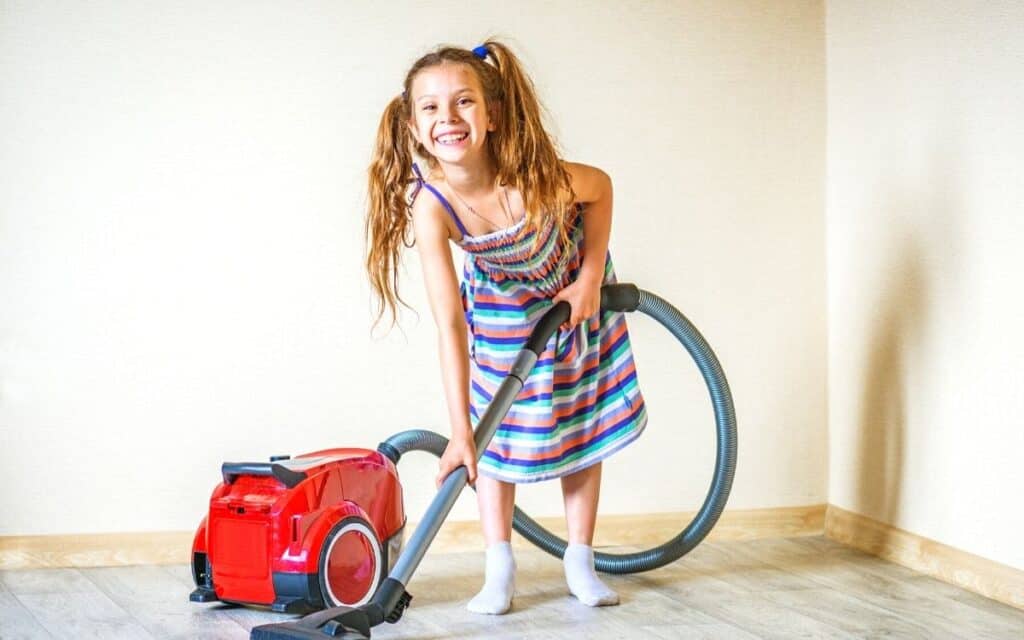
HOW TO GET KIDS TO DO CHORES
When it comes to getting kids to do chores, the most important thing you can do is create a culture of helpfulness in your home.
This means creating an environment in your home in which everyone understands that there’s lots to do to keep the home running like:
- Working to make money
- Washing laundry so we have clean clothes & towels
- Putting clean laundry away so people have clothes to wear
- Keeping the home clean so that we stay healthy, happy, & can find things
- Preparing meals so we have food to eat
And every single member of the household is an important part of making sure your home is healthy, happy, and runs well.
When you’ve created a culture of helpfulness in your home, you can avoid hearing one of the most grating phrases to a parent who has just asked a kid to do something: “What will you give me?”
Instead of relying on giving rewards or getting into a yelling match with your child, your kids will start doing chores without being asked.
HOW TO CREATE A CULTURE OF HELPFULNESS
While a culture of helpfulness probably sounds great in theory, you’re probably like “Okay, Erin. How the heck do I actually do it?”
How do you create a home in which kids don’t complain about chores, are eager to help out, and do chores without being asked?
Let’s break down how you can create a culture of helpfulness in your home:
Step 1: Give Kids the Big Picture.
Instead of the pat answer “because I said so”, to create a culture of helpfulness, you need to help your child see where they fit into the big picture.
They need to see that not only that their effort is needed but that what they do makes a difference to everyone. That their contribution to the home is essential.
Just like us, kids are motivated by knowing that what they do matters and that they are needed and being helpful.
And helping them frame their responsibilities in a big picture look at what needs to be done, is how you do that.
I recommend starting your chores journey by sitting down and having a little “family meeting”.
Plan it for when everyone is in a good mood, keep it fun (ex. have snacks), and keep the moods positive.
And in the meeting, help kids to understand the 3 principles of a helpful home. These help kids see not only what needs to be done, but WHY.
Kids are smart and like to understand why things are the way they are. This helps them see where they fit into the bigger picture of what it takes to run a home.
THE 3 PRINCIPLES OF A HELPFUL HOME
Principle #1: There’s lots of things that need to get done to keep our home running & to help us grow and be happy. These include:
- Working to make money so we have a place to live & the things we need
- Doing the shopping to have food, clothes & other things we need
- Preparing meals so we have food to eat so we can have healthy bodies
- Cleaning & keeping the home tidy so we can find things, stay healthy, and feel good in our home (cleaning room, making bed, cleaning kitchen, vacuuming/cleaning floor)
- Doing laundry so we have clean clothes to wear
- Folding & Putting clean laundry away so that we can
- Taking care of ourself by brushing teeth, bathing/showering so we can be healthy
- Doing schoolwork so we can be successful
- Practicing instruments/sports so we can grow and develop skills that enrich our lives (like working hard to achieve goals)
Principle #2: Everyone is an important part of our household. We ALL have important jobs to do & our home is happiest when everyone does their part.
Principle #3: When we do our part, we get to enjoy fun privileges. When we don’t do our part, we have to miss our on privileges.
You can even explain how this principle works in your life, as an adult. Like working hard to save the money to go on vacations. Or having to work late if we don’t get the things done we need to.
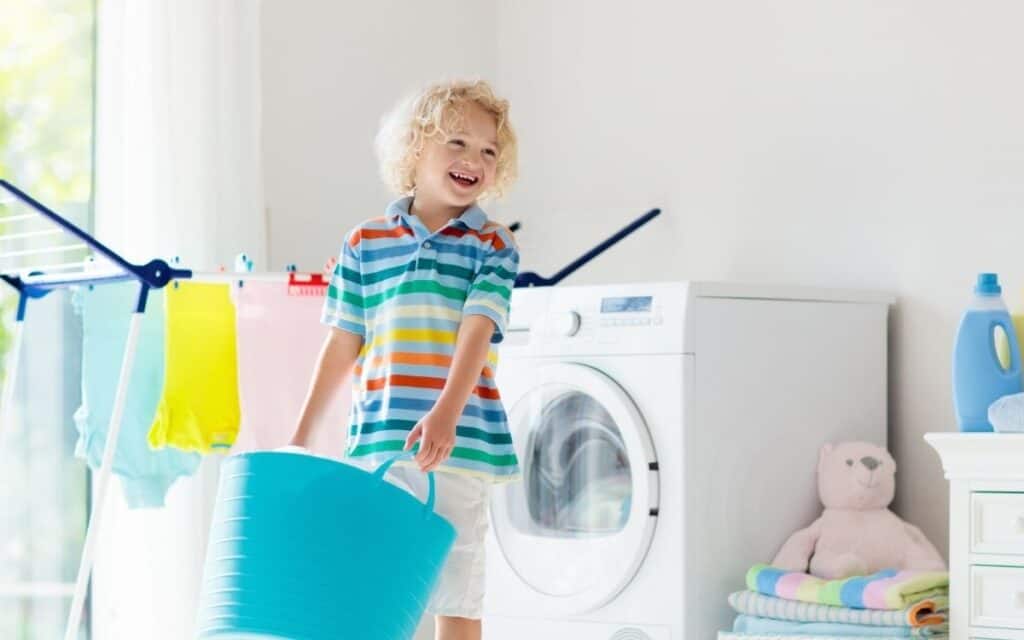
Step 2: Point out Helpful Behavior as much a possible
Once kids start to understand the bigger picture, you want to point out and encourage helpful behavior. And you want to do as much as you possibly can.
Kid love to feel helpful and capable.
You can do this by first, being on constant lookout for helping behavior. And then use a powerful phrase that points out what they did, how it’s been helpful, and it lets them know that they have made a positive contribution to your home.
Here is the basic formula:

For example:
- “You gave your sister a hug after she got hurt so that she would feel better. That was so helpful!”
- “You brought your dishes to the sink, so the table can be clean and I can wash it. That was so helpful!”
- “You followed directions without complaining, so we finished quickly and everyone is happy. That was so helpful!”
- “You picked up your Legos so the room looks nice and no one steps on them. That was so helpful!
Here’s why this phrase is so effective at motivating kids to be helpful and do their chores:
- It shows the child that you are noticing the good they do. It makes them feel good, which makes them want to get noticed more for helpful behavior.
- It builds self-esteem. This points out the impact of their actions. So they can see the positive impact that they can have on the people and things around them. They see that they can make a big difference.
- It shows kids they get much more desirable attention for helping than for complaining. Kids crave attention and praise. This gives them both while teaching them to be helpful.
For more on how to use this phrase, check out the phrase that gets kids excited to help out.
Step 3: Avoid yelling and Keep a Positive Attitude about Chores
One of the quickest ways to get everyone cranky and not thinking rationally is to start yelling.
We all know how quickly things fly off the rails when we start yelling.
And while I’m the first to admit that my kids can drive me completely insane and I’ve been known to lose my cool completely…
I also know that yelling never solves anything. Yelling puts kids on the defensive, gives them a negative attitude towards whatever you’re yelling about, and keeps them resisting.
Like rewards, yelling kills internal motivation in kids.
You can avoid yelling and keep a positive attitude by:
- Pausing and deep breathing when tensions rise
- Excusing yourself before your “blow your lid”
- Using useful phrases to defray tension and keep it positive (see section below)
- If you do lose it and start yelling, apologize. Tell your kid that you messed up and shouldn’t have yelled.
Reiterate that we all have jobs to do, and as a parent, your job is to help them learn responsibility so they can be successful and chores is part of that.
To help your kids calm themselves when upset, check out 4 Genius Ways to Teach Your Kids to Calm Themselves Down.
Step 4: Keep your chore system simple
No matter what chore system you choose to adopt, keep it simple. Complicated chore systems make it hard for both you and your kid to keep up with.
And if it’s too hard, you won’t keep up with it.
Instead, here are a few recommnedations:
#1 Use a simple chore chart posted in public area
You can do this by using a simple chore chart that has daily tasks that they can check off. Kids need clear expectations. And just like adults, they get a real boost when they cross off completed tasks.
Check out several customizable weekly chore charts that I have in my shop.
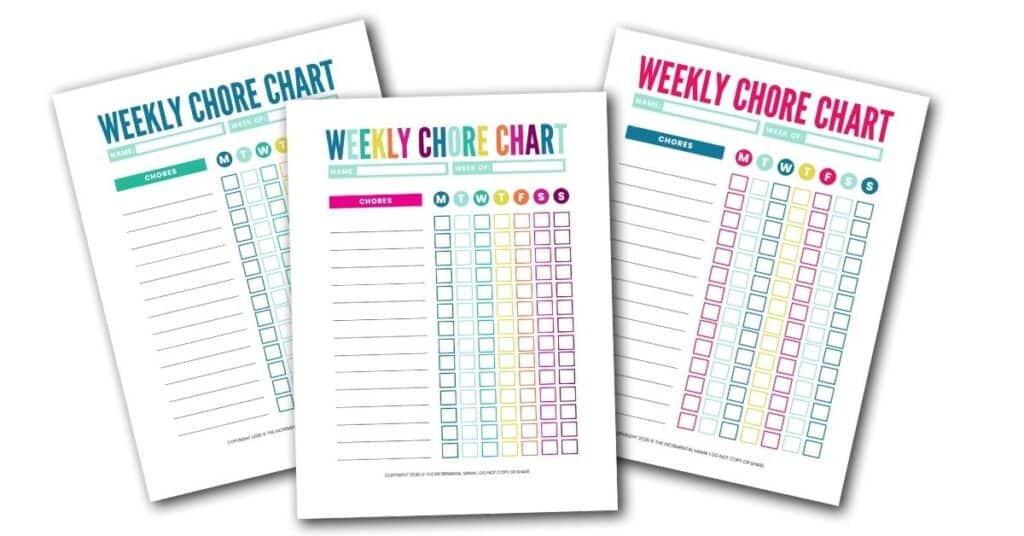
#2 Keep weekday chores the same.
This helps your child develop a solid daily routine that they can master.
You may have “extra chore” listed which could be a rotating list of daily chores. (You can see an example of this concept on this weekly cleaning schedule.
Or keep it open so you can give tasks that are specific to the needs of that day. Just be sure they know that chore right off the bat.
#3 Start small.
Start with small easy tasks that can help your kids both get in the habit of doing chores and feeling capable. Then build gradually as you give plenty of support and positive feedback
Check out Age-by-Age Chore Chart Printable for chore ideas for your kids.
Step 5: Repeat the steps above
Remember, changing the culture of your home takes time and effort. This isn’t a quick fix, but a foundational change that helps kids become intrinsically motivated to help out and take responsibility.
And ANY major change requires vigilance.
Which means that part of your regular conversations with your kids should include talking about:
- what things need to get done
- how everyone contributes
- specific ways they’re being helpful and making a difference
You also want to give yourself and your family members grace as you go through this process.
No one will be perfect. You’ll all have stumbles.
But your success doesn’t depend on perfection: it depend on getting up each time you stumble and recommitting to making the changes you want.
While making big changes is hard, I can tell you from experience that creating a culture of helpfulness is one of the best things you can do in your home.
It takes time and serious effort.
But when your kids start to do things without being asked, help out their siblings with their jobs, and feel a sense of pride and accomplishment when they do hard things…
You’ll be so glad you did.
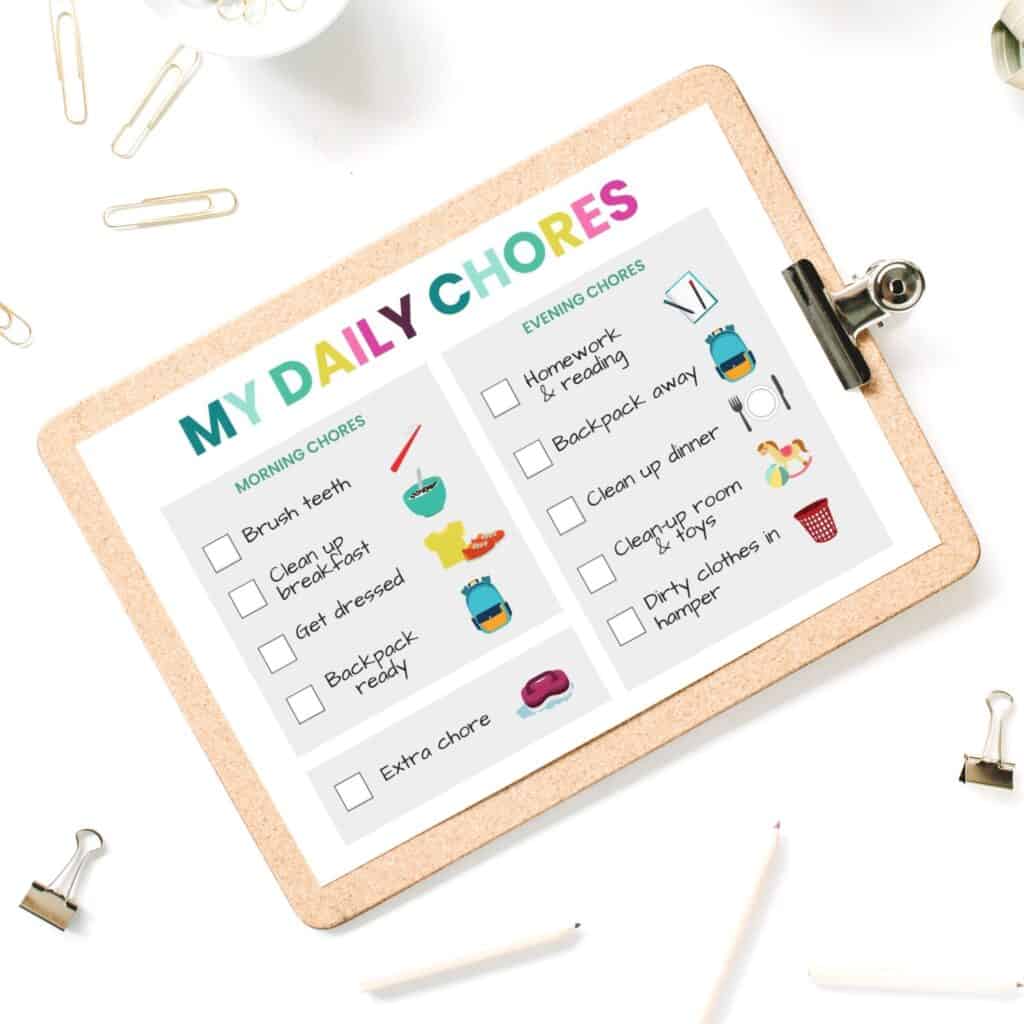
PHRASES TO USE THAT MOTIVATE KIDS TO DO CHORES
As you work towards building a culture of helpfulness in your home, it can be helpful to have a few new phrases you can use.
(Especially in those moments when you’re losing your patience, but want to keep the mood positive)
- You did it! You ____ so that ___. That was so helpful.
- We all have jobs to do. We’re all important. And you do your part when you do your chores.
- You can do hard things.
- How about we take a break (to implement calm-down strategies) and try again in just a bit.
- Let’s take a deep breath together
- I hear you.
- Let’s work as a team.
- I’m going to help you with this.
- It’s okay to feel that way, but we all have important jobs to do to keep our house running. And you are an important part of that.
CONSEQUENCES FOR NOT DOING CHORES
While taking steps to build a culture of helpfulness in your home will motivate your child to do chores, the reality is that no kid will be perfect.
And your kid may refuse to do chores no matter what you do.
Therefore, consequences for not doing chores (or rather not doing their part to take care of the home) are appropriate.
And the best consequences for not doing chores will be losing privileges.
However, I don’t like to frame it as “losing privileges” (negative) and instead like to frame it as “earning privileges” (positive) by doing their part in the home.
(Research suggests positive reinforcement—giving instead taking away—is more motivating).
The truth is your job as a parent is to provided love, shelter, and food for your child no matter what. However, outside of those fundamental needs, your child enjoys many privileges.
Privileges that are not a right, but something that they can earn through appropriate behavior.
In our home, instead of focusing on losing privileges, we focus on earning them by doing chores.
Therefore, our children can earn the following things when they consistently do their chores and obey.
- Mom or dad taking them to the store to use their allowance spending money
- Date night with one parent
- playdate with friend
- Screen time
- Picking dinner or dessert
- Stay up after bedtime to watch a movie or play a game with mom & dad
We have a very simple sticker system where they get stickers for appropriate behavior and can cash those stickers in on the above privileges.
Note: We do not tie allowance to chores as many experts recommend keeping chores and allowance separate.

However, if you have a kid that refuses to do chores no matter what you do, you might consider doing the following:
- Having a frank conversation calmly expressing why you’re frustrated and why it’s unfair that they do not contribute. And that your job as a parent is to make sure they have the skills they need to survive as an adult. Which means learning how to take care of themselves.
- Take a moment and think about what privileges motivate your child. Each child is different so you may need to think out of the box.
- Use the 4 Tendencies Framework. Gretchin Rubin has developed a truly incredible personality framework that helps determine how different people respond to expectations. It’s extremely helpful in finding helpful tiggers that get people (and your kids) motivated. Rubin describes how it can be used with kids here.
BTW, the book The 4 Tendencies is life-changing and helped me understand myself, my husband, and those around me much much better.
YOU CAN GET YOUR KIDS EXCITED ABOUT CHORES
You. Can. Do. This.
While getting your child to do chores can feel impossible, it’s not. But it takes some work.
It just happens to be some of the most rewarding work I’ve found as a parent as it has strengthens our family relationships by working together and has made our home happier as it’s cleaner and everyone pitches in.
It all comes down to creating a culture of helpfulness in your home.
You’ve got this!
For more on chores, you may also like:
Cleaning Checklist Bundle for Kids. It’s got both ready to print checklists and several fillable versions you can customize to perfectly suits your home and family.
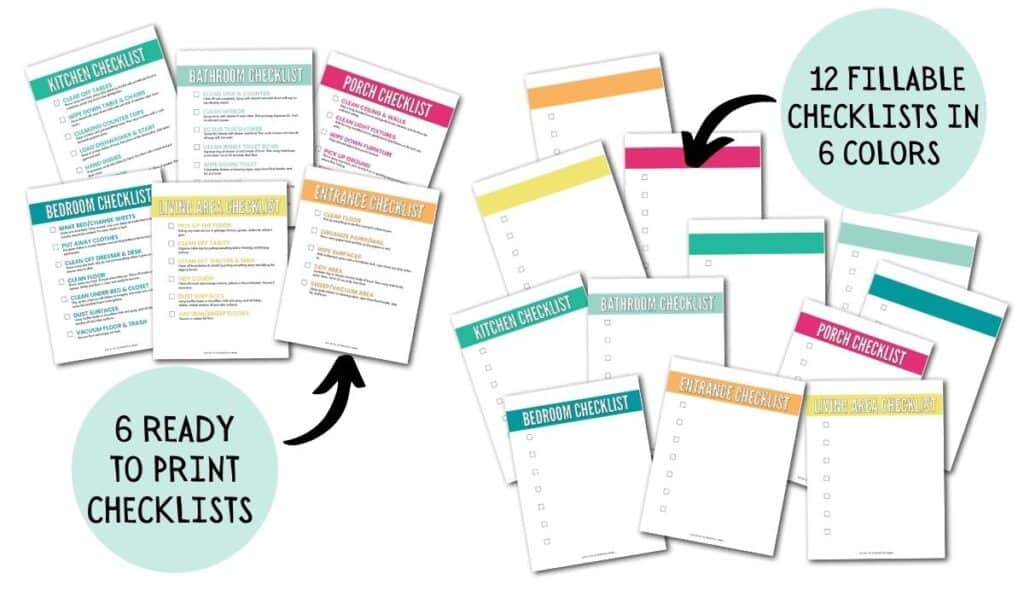
Age-by-Age Chore Chart Printable
How to Get Your Child to Follow a Chore Chart







Leave a Reply